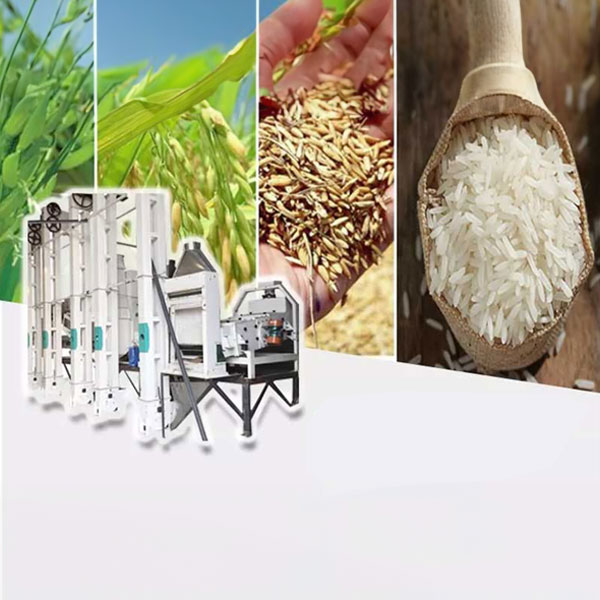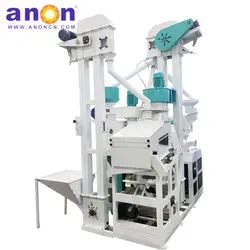Introduction
Parboiling rice not only enhances its nutritional value but also enriches its taste. This technology has reached a high level of maturity and is extensively employed in rice processing.
In this article, we will delve into the intricacies of parboiling rice. We have professional equipment and production processes. We are committed to providing you with comprehensive insights and detailed answers to your inquiries.
Are you eager to know how to parboil rice? Let’s commence our exploration!

What is Parboiling Rice?
Parboiling rice is a special process in which rice grains are partially boiled in the husk before further processing. This method involves soaking the rice, followed by steaming it under pressure. The partially cooked rice is then dried and milled to remove the husk, resulting in parboiled rice.
The parboiling rice process aids in preserving more nutrients within the rice grains. In contemporary times, parboiled rice is a nutritious and versatile option in many countries.
Parboiling Rice Step-by-Step
Before introducing the process, you have already understood what parboiling rice is. Let’s now delve deeper into the parboiling rice process, exploring each step in detail along with the machinery utilized.
Pre-cleaning Rice
Parboiling rice involves several steps similar to the rice milling process. The first step is to clean the rice. Typically, this involves two machines to ensure thorough cleaning. Of course, this process can be adjusted based on the quality and quantity of rice. Let’s break it down:
Pre-Cleaning: The rice is initially pre-cleaned to remove large impurities like stones and branches. In this step, the machines separate impurities from the rice by rotating or vibrating, as they have different volumes and weights.

Further Cleaning: After pre-cleaning, the rice needs more thorough cleaning to ensure there are no small impurities left. This step removes smaller impurities from the rice’s surface. A stone remover with a suction device can be used to clean stones and smaller impurities.
After these cleaning steps, the impurities in the rice are greatly reduced. Cleaning the rice is the first and crucial step in parboiling rice. It ensures the final product’s quality and safety. Moreover, it also protects the processing machinery from damage caused by impurities.
Soaking Rice
Soaking is a vital step in parboiling rice, as it allows the rice to absorb moisture thoroughly, priming it for parboiling. Here is a detailed process and the necessary equipment for soaking:
Preparation: Put the cleaned rice into a dedicated soaking device. Ensure that the rice is completely covered in water and that the water level is higher than the rice to ensure that it can fully absorb moisture.
Setting Soaking Conditions: Depending on the rice variety and quality. You should adjust the soaking conditions, including temperature and time. Generally speaking, the soaking temperature is between 70-80 degrees Celsius and the soaking time is 4-6 hours.
Maintaining Stability: During the soaking process, maintain stable water temperature and level. This ensures optimal conditions for the rice to absorb moisture efficiently.
The soaking equipment usually includes special containers made just for soaking rice. These containers have heaters and pumps to keep the water temperature and level steady. The water heater can change the temperature as necessary, making sure it stays just right for the rice to soak up moisture well. Plus, the soaking equipment has a control system to set and watch over-soaking conditions, like temperature and time. This lets people adjust the soaking process to fit different kinds of rice.
Parboiling Rice
Parboiling is a crucial step where soaked rice swiftly moves through the steaming pot and is then steamed until it is parboiled.
Specialized steaming equipment is essential for parboiling rice. It is vital to adjust the temperature and pressure of the equipment to ensure the rice is parboiling under the right conditions. The light, sub-dark, and dark parboiling rice can be processed according to customer requirements. Adjusting the steaming techniques can also result in different colors of brown rice.
The steaming equipment is robust and can handle high temperatures. It is equipped with a temperature control system to adjust the temperature, preventing the rice from getting too hot or too cold. Additionally, it features a pressure control system to manage pressure during parboiling rice.
Drying Rice
Parboiled rice must undergo drying to decrease moisture content. This can reduce moisture content, improve stability, and extend shelf life.

There are usually two methods for drying, natural air drying and machine drying. If natural air drying is preferred, it is important to spread the rice in a well-ventilated area. With the help of natural wind, moisture gradually evaporates and dissipates. While this method does not call for equipment, it does take longer and relies on appropriate weather conditions.
However, machine drying offers several advantages over natural air drying. Typically, machines utilize a hot air circulation method to dry rice efficiently. Heating elements generate hot air, which is then evenly blown into the drying room via the ventilation system. In environments with high temperatures and low humidity, rice dries quickly.
There are 2 key technologies in the parboiling rice production line. The first is fluidized bed drying technology. The rice swiftly passes through and moisture is rapidly dried. After initial drying in a fluidized bed, the rice proceeds to a dryer for secondary drying, reducing the rice’s crushing rate.
The second technology is known as crushing moisture meter technology. It plays a critical role in ensuring accurate moisture measurement in dried rice. After the rice undergoes drying, this technology takes samples and crushes them. This method not only detects the moisture content on the surface of rice but also ensures accurate moisture measurement.
Time for Parboiling Rice
The parboiling rice process enhances the nutritional value of rice and alters its color. Among all the steps involved, soaking consumes the most time, typically lasting 4-6 hours, while other steps usually take 1-2 hours. However, the duration may vary depending on the quantity of rice. Nevertheless, with the aid of fully automated machines, you can multitask efficiently.
White Rice vs Parboiled Rice
White rice and parboiled rice are two common types of rice. Here is a comparison between them:
Processing method
- White rice: It is processed directly from rice grains after husking, milling, and grading.
- Parboiled rice: It undergoes soaking and steaming before husking. Subsequently, it undergoes the same processing as white rice.

Appearance and taste
- White rice: It appears crystal clear and white, with a soft and easily digestible taste.
- Parboiled rice: It has particles that are slightly yellow or golden. It has a harder texture and a slightly sticky taste but is more chewy than white rice.
The End
The parboiling rice process involves cleaning, soaking, parboiling, and drying. After reading this article, you should have a comprehensive understanding.
Are you in need of equipment for your business? Visit ANON for the most cost-effective machines and customized services! Don’t hesitate—welcome your visit!




